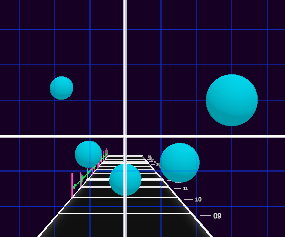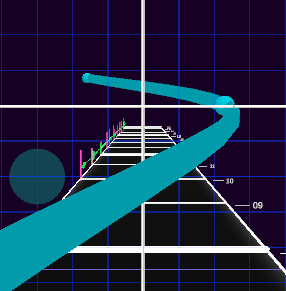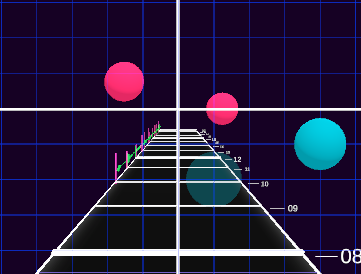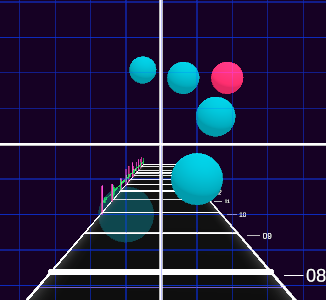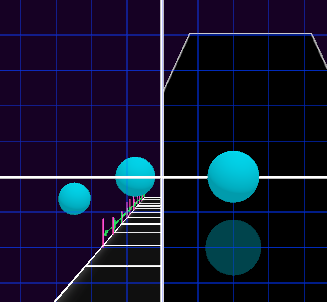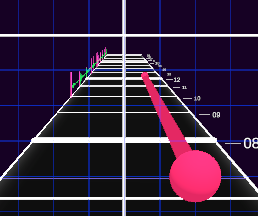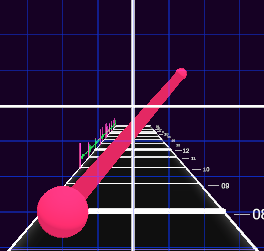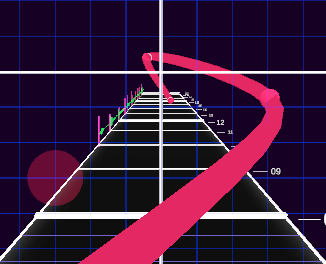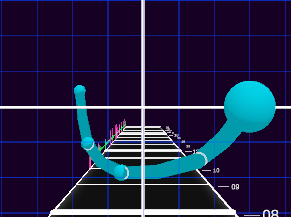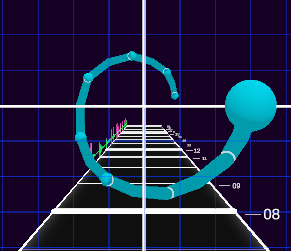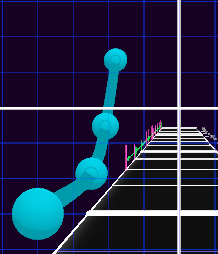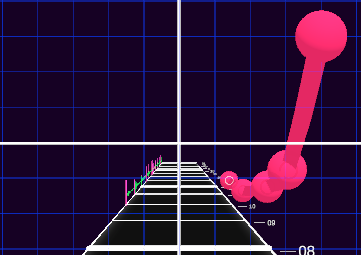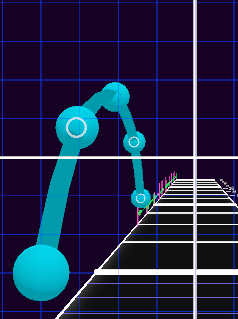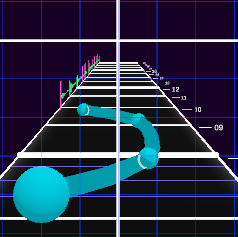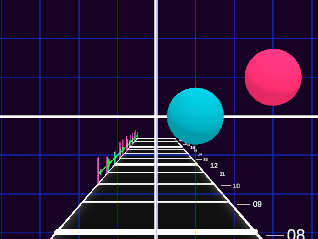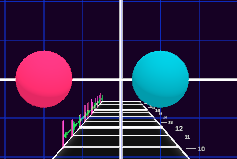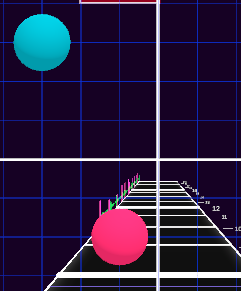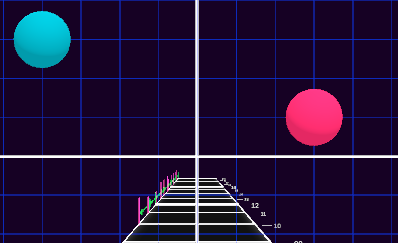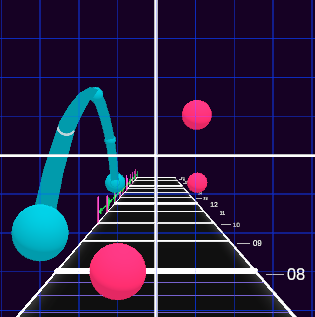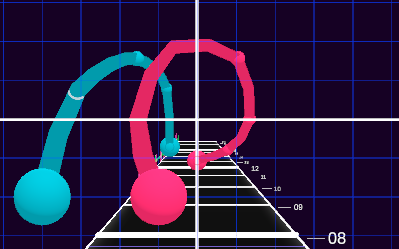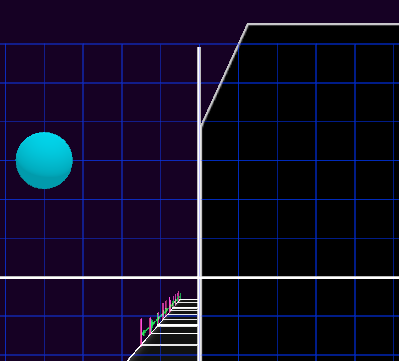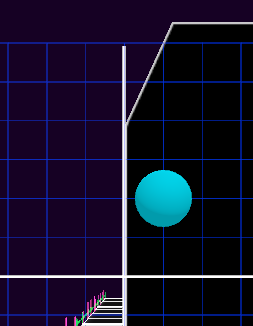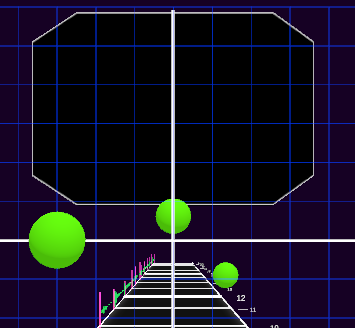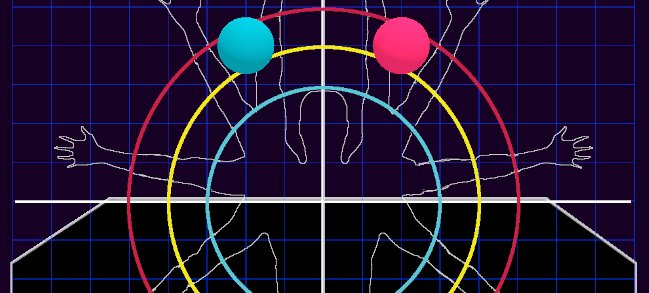Here are some basic ideas to think about when you're ready to take your mapping to the next level. These aren't hard and fast rules — rather, they are general concepts to get you thinking about the fun factor of your maps.
¶ Impact
Fundamentally, music is a series of rhythmic pulses, or beats. This is what players want to move to, and it is the best place to add impact to the motion.
Listen to the song and pick out which notes feel more emphasized (accented). These notes will be louder, stronger, a higher pitch, or have a longer duration. Extra impact feels good on accented notes.
Here are some ways to add impact to a motion:
Briefly increase the speed of motion.
Change the direction of motion. Don't be too intense with this as it can be uncomfortable.
Switch hands. For instance, if the current motion is on the left hand, you can create impact by switching to a right-handed pattern.
Add the other hand in. If the current motion is on a single hand, adding the other hand in for a note can create impact.
Place a wall to dodge. Leaning and crouching feel dynamic.
¶ Motion
Synth Riders is more fun when the notes move around the play space. Don't just stay in one section of the grid — move the action around the grid at a reasonable speed. Just try to stay within, or close to, the Comfort guide at all times.
Here are some examples of motions that you can do. They are demonstrated with rails, but they often apply to regular notes too — the player just has a bit more freedom in the space between notes.
No movement
Briefly holding one position can work as form of impact, but is uninteresting to play beyond a short time.
Straight line
The slowest, most controlled motion between two points. This works nicely with direction changes.
Multiple direction changes between lines:
Curve
Circular motions are usually more natural than a straight line. Experiment with different intensities of curves.Short, shallow curves offer some impact at the start and end:
More intense cuves can spiral around repeatedly:
Arc
A straight line motion that either accelerates or decelerates. This motion has great impact.Accelerating arc, which has a large impact at the end (notes on the rail added for clarity):
Decelerating arc, which has a large impact at the start (notes on the rail added for clarity):
A full arc, which has a large impact at the start and end (notes on the rail added for clarity):
Redirect
This is when the motion changes to the opposite direction.Sharp redirects create good impact, but should not be spammed in quick succession:
Slow redirects give you a chance to build speed for the next motion.
¶ Placing notes on a rail
Notes on rails can add impact or just be there for aesthetics. Rails count as single notes for restoring lost energy in game, so adding some notes to your rails can give players a chance to recover from misses.
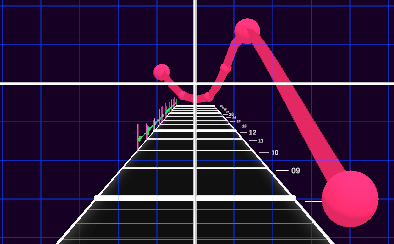
¶ Using both hands at once
Two handed notes vastly increase the creative possibilities of this game. The Special Hands Together note type is one way to add two handed patterns, but using both Left Hand and Right Hand notes together gives you even more options. Some examples:
Close together
Crossed over
Vertically apart
Horizontally apart
Rail with one hand, notes with the other
Two rails (be careful about tangling the player's arms or crashing their controllers together)
¶ Walls
Walls add an extra dimension to gameplay by encouraging some full body movement. Here are some examples:
Side walls
Regular side walls make you lean a little to the opposite side. Angled side walls add a slight downward motion to the lean.A note can emphasize the lean:
A note can also make you reach against the lean, which is fun within reason:
Center walls
The idea behind the center wall was to offer players a choice of where to lean. However, it tends to obscure your vision since it is in the middle of the play space, and you have to lean dangerously far in order to dodge it.If you place a center wall, move it to either side at least a little bit and treat it as a side wall.
Crouch walls
Crouching on its own can feel impactful, and you can also hit notes while doing so. Just make sure the notes are low enough to comfortably hit during the crouch, and don't force the player back up too quickly.
Jump walls
An advanced technique is to drag a crouch wall low enough to pass under the player's head. When paired with a high up note, this can encourage players to make a small jump.Be considerate of players with limited mobility. Jump walls should merely encourage a hop, and not require one.
¶ Be creative and experiment!
- When you're not actively mapping the song, just listen to the music and let it inspire you to think about different movements that could be fun.
- Real world choreography can inspire fun movements, but the available motions in this game are limited compared to a real life dancer. Pick out the most interesting motions that can translate to the game, and fill in the rest with your own creativity.
- Combine and connect different motions into unique, interesting patterns.
- Always challenge your ideas by testing them in-game and getting others to test them for you. You may need to adjust or (as painful as this may be) abandon ideas that aren't working.
- Play a variety of maps, both from the official OST and from the custom map community. This isn't necessarily so you can copy patterns from other maps, but playing different maps will give you more ideas about what's fun and expand your creativity.
